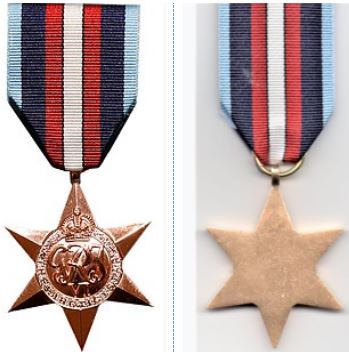Arctic Star
From Our Contribution
 | |
Eligibility
The medal was awarded for any length of operational service north of the Arctic Circle by members of the British Armed Forces and the Merchant Navy. The qualifying area is defined as 66° 32’ North Latitude and the qualifying period recognises the particular severity of the conditions experienced by those who served in the Arctic.
The inclusive qualifying period of service is 3 September 1939 to 8 May 1945, the duration of the Second World War in Europe. Though the Arctic Star is intended to recognise the service of personnel in the Arctic convoys of World War II, other members of the military and civilians may also qualify.
Eligibility for the Arctic Star does not affect an individual's eligibility for any other previously awarded campaign medals, nor does it automatically entitle individuals to any further awards
Description
The set of campaign stars was designed by the Royal Mint engravers. The stars all have a ring suspender which passes through an eyelet formed above the uppermost point of the star. They are six–pointed stars, struck in yellow copper zinc alloy to fit into a 44 millimetres diameter circle, with a maximum width of 38 millimetres and 50 millimetres high from the bottom point of the star to the top of the eyelet.
Obverse The obverse has a central design of the George VI Royal Cypher "GRI VI", surmounted by a crown. A circlet, the top of which is covered by the crown, surrounds the cypher and is inscribed "THE ARCTIC STAR.
Reverse The reverse is plain
Notes
Content for the history and honours sections has come from a combination of Wikipedia and the Australian War Memorial websites.